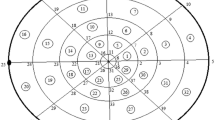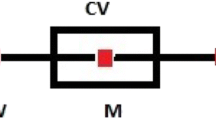Abstract
Calcium is the most universal second messenger in cells and plays an important role in initiation, sustenance and termination of various activities in cells required for maintaining the structure and function of the cell. Calcium signal at fertilization is necessary for egg activation and exhibits specialized spatial and temporal dynamics. The specific calcium concentration distribution patterns in oocytes required for various activities such as egg fertilization and maturation are not well understood. In this paper, a three-dimensional finite element model is proposed to study the spatio-temporal calcium distribution in oocyte. The parameters such as buffers, SERCA pump, RyR calcium channel, point source and line source of calcium are incorporated in the model. The appropriate initial and boundary conditions have been framed on the basis of physical condition of the problem. A program is developed in MATLAB for simulation. The results have been used to study the effect of source geometry, RyR calcium channel, SERCA pump and buffers on cytosolic calcium concentration distribution in oocyte.









Similar content being viewed by others
References
Agrawal M, Adlakha N, Pardasani KR (2010) Three dimensional finite element model to study heat flow in dermal regions of elliptical and tapered shape human limbs. Appl Math Comput 217:4129–4140
Ajduk A, Maagocki A, Maleszewski M (2008) Cytoplasmic maturation of mammalian oocytes: development of a mechanism responsible for sperm-induced Ca2+ oscillations. Reprod Biol 8(1):3–22
Baran I (2006) The slow kinetics of elementary calcium events in Xenopus oocytes. Rom J Biophys 16:9–19
Berridge MJ, Bootman MD, Lipp P (1998) Calcium-a life and death signal. Nature 395:645–648
Berridge MJ, Lipp P, Bootman MD (2000) The versatility and universality of calcium signalling. Nat Rev Mol Cell Biol 1:11–21
Berridge MJ, Bootman MD, Roderick HL (2003) Calcium signalling: dynamics, homeostasis and remodelling. Nat Rev Mol Cell Biol 4:517–529
Brangwynne CP, Mitchison TJ, Hyman AA (2011) Active liquid-like behavior of nucleoli determines their size and shape in Xenopus laevis oocytes. Proc Natl Acad Sci USA 108(11):4334–4339
Busa WB, Nuccitelli R (1985) An elevated free cytosolic Ca2+ wave follows fertilization in eggs of the frog, Xenopus laevis. J Cell Biol 100:1325–1329
Flacke M (2004) Reading and patterns in living cells-the physics of Ca2+ signaling. Adv Phys 53(3):255–440
Girard S, Lückhoff A, Lechleiter J, Sneyd J, Clapham D (1992) Two-dimensional model of calcium waves reproduces the patterns observed in Xenopus oocytes. Biophys J 61(2):509–517
Gosden RG, Bownes M (1995) Cellular and molecular aspects of oocyte development. In Gametes—the Oocyte. In: Grudzinskas JG, Yovich JL (eds) Reviews in human reproduction. Cambridge University Press, Cambridge, pp 23–53
Han JM, Tanimura A, Kirk V, Sneyd J (2017) A mathematical model of calcium dynamics in HSY cells. PLoS Comput Biol 13(2):e1005275. doi:10.1371/journal.pcbi.1005275
Hatano A, Okada J, Washio T, Hisada T, Sugiura S (2011) A three-dimensional simulation model of cardiomyocyte integrating excitation-contraction coupling and metabolism. Biophys J 101:2601–2610
Igusa Y, Miyazaki SI (1983) Effects of altered extracellular and intracellular calcium concentration on hyperpolarizing responses of the hamster egg. J Physiol 340:611–632
Jafri MS, Vajda S, Pasik P, Gillo B (1992) A membrane model for cytosolic calcium oscillations, a study using Xenopus oocytes. Biophys J 63:235–246
Jha BK, Adlakha N (2013) M.N Mehta, Two dimensional finite element model to study calcium distribution in astrocytes in presence of VGCC and excess buffer. Int J Model Simul Sci Comput 4:1–13
Jha BK, Adlakha N, Mehta MN (2014) Two dimensional finite element model to study calcium distribution in astrocytes in presence of excess buffer. Int J Biomath 7(3):1–14
Kaouri K, Chapman SJ, Maini PK (2014) Mathematical modelling of calcium signalling taking into account mechanical effects. J Bioenerg Biomembr 46(5):403–420
Kotwani M, Adlakha N, Mehta MN (2014) Finite element model to study the effect of buffers, source amplitude and source geometry on spatio-temporal calcium distribution in fibroblast cell. J Med Imaging Health Inf 4(6):840–847
Liang SL, Zhao QJ, Li XC, Jin YP, Wang YP, Su XH, Guan WJ, Ma YH (2011) Dynamic analysis of Ca2+ level during bovine oocytes maturation and early embryonic development. J Vet Sci 12(2):133–142
Machaty Z, Ramsoondar JJ, Bonk AJ, Prather RS, Bondioli KR (2002) Na+/Ca2+ exchanger in porcine oocytes. Biol Reprod 67:1133–1139
Manhas N, Pardasani KR (2014) Modelling mechanism of calcium oscillations in pancreatic acinar cells. J Bioenerg Biomembr 46(5):403–420
Manhas N, Sneyd J, Pardasani KR (2014) Modelling the transition from simple to complex Ca2+ oscillations in pancreatic acinar cells. J Biosci 39(3):463–484
Marchant J, Cakkamaras N, Parker I (1999) Initiation of IP3-mediated Ca2+ waves in Xenopus oocytes. EMBO J 18:5285–5299
Marhl M, Haberichter T, Brumen M, Heinrick R (2000) Complex calcium oscillations and the role of mitochondria and cytosolic proteins. Biosystems 57:75–86
Matsuzaki M, Ando H, Visscher SN (1979) Fine structure of oocyte and follicular cells during oogenesis in Galloisiana Nipponensis (Caudell and King) (Grylloblattodea: Grylloblattidae). Int J Insect Morphol Embryol 8(5):257–263
Naik PA, Pardasani KR (2013) One dimensional finite element method approach to study effect of ryanodine receptor and SERCA pump on calcium distribution in oocytes. J Multiscale Model 5(2):1–13
Naik PA, Pardasani KR (2015a) One dimensional finite element model to study calcium distribution in oocytes in presence of VGCC, RyR and buffers. J Med Imag Health Inform 5(3):471–476
Naik PA, Pardasani KR (2015b) Two dimensional finite element model to study calcium distribution in oocytes. J Multiscale Model 6(1):1–15
Naik PA, Pardasani KR (2016) Finite element model to study calcium distribution in oocytes involving voltage gated calcium channel, ryanodine receptor and buffers. Alex J Med 52(1):43–49
Panday S, Pardasani KR (2013) Finite element model to study effect of advection diffusion and Na+/Ca2+ exchanger on Ca2+ distribution in oocytes. J Med Imag Health Inform 3:374–379
Panday S, Pardasani KR (2014) Finite element model to study the mechanics of calcium regulation in oocytes. J Mech Med Biol 14:1–14
Pathak KB, Adlakha N (2015) Finite element model to study calcium signalling in cardiac myocytes involving pump, leak and excess buffer. J Med Imaging Health Inf 5(4):683–688
Petr J, Rajmon R, Lansk V, Sedmıkova M, Jılek F (2005) Nitric oxide-dependent activation of pig oocytes: role of calcium. Mol Cell Endocrinol 242:16–22
Rao SS (2004) The finite element method in engineering. Elsevier Science and Technology books, New York
Smith GD (1996) Analytical steady-state solution to the rapid buffering approximation near an open Ca2+ channel. Biophys J 71:3064–3072
Smith GD, Dai L, Miura RM, Sherman A (2000) Asymptotic analysis of buffered calcium diffusion near a point source. SIAM J Appl Math 61:1816–1838
Snyder SM, Palmer BM, Moore RL (2000) A mathematical model of cardiocyte Ca2+ dynamics with a novel representation of sarcoplasmic reticular Ca2+ control. Biophys J 79:94–115
Stith BJ, Goalstone M, Silva S, Jaynes C (1993) Inositol 1,4,5-Trisphosphate mass changes from fertilization through first cleavage in Xenopus laevis. Mol Biol Cell 4:435–443
Swann K (1992) Different triggers for calcium oscillations in mouse eggs involve a ryanodine-sensitive calcium store. Biochem J 287:79–84
Takahashi T, Neher E, Sakmann B (1987) Rat brain serotonin receptors in Xenopus oocytes are coupled by intracellular calcium to endogenous channels. Proc Natl Acad Sci USA 84:5063–5067
Tewari S, Pardasani KR (2010) Finite element model to study two dimensional unsteady state cytosolic calcium diffusion in presence of excess. IAENG J Appl Math 40(3):1–5
Tomkowiak M, Guerrier P, Krantic S (1997) Meiosis reinitiation of mussel oocytes involves L-type voltage gated calcium channel. J Cell Biochem 64(1):152–160
Tosti E (2006) Calcium ion currents mediating oocyte maturation events. Reprod Biol Endocrinol 4(26):1–9
Tosti E, Boni R (2004) Electrical events during gamete maturation and fertilization in animals and humans. Hum Reprod Update 10(1):53–65
Toth S, Huneau D, Banrezes B, Ozil JP (2006) Egg activation is the result of calcium signal summation in the mouse. Reproduction 131(1):27–34
Tripathi A, Adlakha N (2013) Finite element model to study calcium diffusion in a neuron cell involving J RyR , J Serca and J Leak , . J Appl Math Inform 31(5–6):695–709
Vasilets LA, Schwarz W (1992) Regulation of endogenous and expressed Na+/K+ pumps in Xenopus oocytes by membrane potential and stimulation of protein kinases. J Membr Biol 125(2):119–132
Viets LN, Campbell KD, White KL (2001) Pathways involved in RGD-mediated calcium transients in mature bovine oocytes. Cloning Stem Cells 3(3):105–113
Wagner J, Keizer J (1994) Effects of rapid buffers on diffusion and oscillations. Biophys J 67:447–456
Yi YB, Wang H, Sastry AM, Lastoskie CM (2005) Direct stochastic simulation of Ca2+ motion in xenopus eggs. Phys Rev E 72:1–12
Young WK, Bang H (1997) The finite element method using MATLAB. CRC Press, Boca Raton, pp 98–101
Young Y, Choi J, Parker I (1995) Quantal puffs of intracellular Ca2+ evoked by inositol trisphosphate in Xenopus oocytes. J Physiol 482(3):533–553
Yue C, White KL, Reed WA, Bunch TD (1995) The existence of inositol 1,4,5-trisphosphate and ryanodine receptors in mature bovine oocytes. Development 121(8):2645–2654
Zhou Z, Neher E (1993) Mobile and immobile calcium buffers in bovine adrenal chromaffin cells. J Physiol 469:245–273
Acknowledgements
The authors are very much thankful to Department of Biotechnology, New Delhi, India for providing support in the form of Bioinformatics Infrastructure Facility at Maulana Azad National Institute of Technology for carrying out this work.
Author information
Authors and Affiliations
Corresponding author
Rights and permissions
About this article
Cite this article
Naik, P.A., Pardasani, K.R. Three-dimensional finite element model to study calcium distribution in oocytes. Netw Model Anal Health Inform Bioinforma 6, 16 (2017). https://doi.org/10.1007/s13721-017-0158-5
Received:
Revised:
Accepted:
Published:
DOI: https://doi.org/10.1007/s13721-017-0158-5




